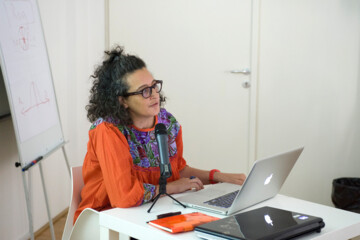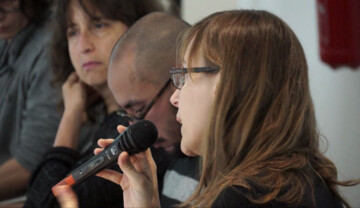Few political events have been exposed and “experienced” globally as live broadcasts as the insurgencies in the Arab world, or what the mainstream media have decided to refer to as “the Arab Spring”. With television spectators, YouTube and Facebook users across the world witnessing news reports as well as “unmediated” live video streaming from the heart of the action, it would seem that the famous adage from the 1960s, “the revolution will not be televised”, no longer holds. The common denominator to the body of videos across countries that have experienced insurgencies is that first and foremost they address the civic imaginary of the viewer, whether produced by insurgents or the regimes’ security departments. They are at war; the first speaks the language of → emancipation (speaking, doing and recording what the regime has ordained as “prohibited”) while the second speaks the language of fear (uninhibited administration of violence, threat of social collapse and chaos); the first articulates the idiom of individual → agency within newly forged plural, diverse citizenship, while the second reinforces the language of sectarian community and difference; the first has marshalled creativity using the arts, playfulness, humour, theatricality and the carnivalesque, while the second has rallied the endorsement of famous stars from pop music and television serials, arguing in the chilling language of → conspiracy, realpolitik and pragmatism.
The seductive power of the unmediated in vivo, in situ video record of the lived experience transmitted in real time and raw is tremendous. And yet, it cannot stand in for the actual experience of being there, nor does it convey the full complexity of the political subjectivities being formed. Thus, as spectators, we can only be prognostic or speculative in sketching the contours of these new political subjectivities. Being there, standing in Tahrir, in the processional marches on Alexandria’s seaside corniche, or hemmed in a street in Homs, Harasta, Douma or Idlib in Syria, is first and foremost a physical experience. The crucible of this reclaiming of political → agency, re-articulation of the civic self and forging of a new body politic, is the body. In socially conservative societies like Egypt and Syria, where the organised and outspoken political opposition to despotic regimes was political Islam, ideologies that abnegate, demonise and police the body, this new political subjectivity promises to coalesce, come into being and engage with the religiopolitical in unexpected and interesting ways.
In the first two years of the insurgency in Syria, the centrality of the body in the daily chronicles of street protests was obvious, specifically in one of the most surprising features of the insurgency, namely, dancing. Invariably, in freezing cold and excruciating heat, at night and during the day, and even in some funeral processions, insurgents dance the dabkeh, a countryside folk tradition, and common to the Levant in myriad varieties, performed as a celebration. In its miraculously steadfast and tireless commitment to reject indulging the regime’s language of violence and terror, these creative strategies contributed to forging the new civic engagement and political subjectivity.



